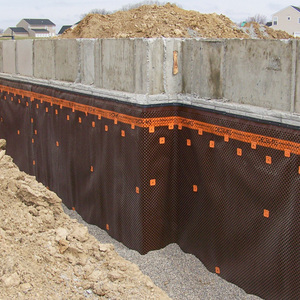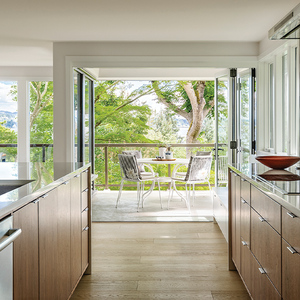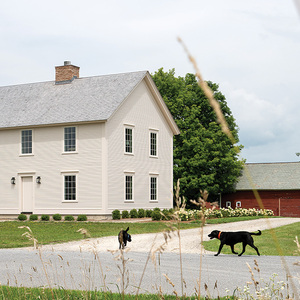Hi all,
Am I alone in sometimes getting confused when I turn to the tables in my building code to find the sizes and spans of framing members? I not really new to carpentry, but I guess reading these tables correctly isn’t my strongest suit.
I guess what I’m looking for from you folks out there is not so much “can I span this far with this stick using this design load.” , it’s more an general look at these tables and the basics on how to use them so I can quickly and accurately find this on my own. Can someone explain fb and modulus of elasticity in plain language and how they relate to the strength and stiffness of a particular stick? What is the difference between the fb values for normal duration, snow loading versus 7 day loading? If I’m framing with PT, do I use the values for southern pine, mixed southern pine, or SPF (southern)? It’s not so much finding the information in the design values that troubles me, but puting it to use with the allowable spans tables.
I should probably say that I’m in MA, and am looking at the tables in the 6th edition MA code. I now there have been significant changes in the 7th edition, but I think my questions should still be as relevant.
Thanks in advance for you help and advice.
– Rob



















Replies
The fb values in the chart are the pounds per square inch of axial strain generated by bending force that a given species and grade of wood can handle.
Fb=MY/I. M is the internal moment force, and I=(b)x(h cubed)divided by 12. Y is half of h, (for symmetrically shaped members).
You need to do some calculations based on the load, dimension, orientation and unsupported length of the member to determine how much axial strain is being generated in a given scenario.
The first step is figuring the tributary area loading that member, or the point load loading that member. Finding the load on the beam, essentially.
Then you find how far from the end support that load is, which will give you the "moment force" acting at that point. (In simple cases.) Kind of like torque.
If you have 10 pounds per square foot acting over a ten square foot tributary area, that's 100 pounds of load. Say it's loading a beam that spans 20', or 10' from each supported end. That gives you 10'x100 pounds of moment force, or 1000 pound-feet. ("M"=1000#'). The same would be true if you had a 100# point load on the middle of a 20' span.
Then you plug that into the equation Fb=MY/I. M in this case is 1000#'.
Y is the distance from the "neutral axis" to the "extreme fiber", or outermost edge of the member. The neutral axis is the centerline (top to bottom) of a symmetrical member. Suppose your beam is a 2x6, positioned in the usual fashion, like in a joist hanger, not flat-wise. A standard 2x6 for instance in the usual orientation, would have a 'Y' of 2.75" (half of 5.5").
So now you've got M, and Y, on to "I"
"I" is "b" times "h"-cubed divided by 12, where "b" is the base, or width of the member, and "h" is the height. 12 is 12.
A standard 2x6 oriented in the usual fashion, for instance, would have a "b" of 1.5", and an "h" of 5.5".
So, the "I" value of a 2x6 (in the usual orientation) would be (1.5")x(5.5")x(5.5")x(5.5")/12, or 20.78020833 inches to the fourth. (Double check that math- I've only got a pen & paper).
So, Fb of a 2x6 spanning 20' from support to support with 1000#' of moment force is: (1000 pound feet) times (2.75"), divided by (20.78020833 inches to the fourth). (if i did my "I" math correctly.)
I'll let you do the math on that one- don't forget to calibrate units- inches and feet.
Modulus of elasticity is a little tricky, I'll leave that for another post.
I don't know what species your PT is. It is probably no.2 grade.
k
Edited 6/1/2009 5:54 pm by KFC
Edited 6/1/2009 6:07 pm by KFC
Unless you are an Engineering/technical type, this is pretty hard to to explain on a site like this, as you see by the previous post.
Generally, the larger the values of the things you mentioned (Fb, Mod. of elasticity, etc. the stronger the member (stick as you put it) will be. The higher the lumber grade the higher those values will be. e.g. from select, structural, #1,#2, finally down to #3. You will notice for engineered lumber such as glue lam's, LVL's, TJI's etc., these values are much higher than standard lumber products.
Usually, for joist, rafters and other dimensioned lumber you normally find at your local lumber dealer, they will, for the most part, carry #2 & btr. in species that is locally available. Ex. Doug Fir, Souther Yellow Pine or as you noted "SPF (Spruce-Pine-Fir), and other Northern species. If you are engineering something such as a truss or a special beam, you may wish/need a better/stronger stick to meet the specific design requirements and have to special order those materials and will pay a premium.
As to snow loading etc., since that is not a consideration in my neck of the woods, I leave that to some snow bird to comment on. I can find that confusing myself. Would like to see what others say about snow loading etc. A while back, I did job just outside of Aspen, Co. at 11,000 ft. with snow load of 120#/sf, but because the snow could stay for almost 6 months, it was just considered as the live load.
I can't answer about pressure teated lumber. I don't know what effects of treating does to the structural values if any.
Edited 6/1/2009 8:32 pm ET by oops
Thanks to both of you for your help. I guess I'd be lying if I said I followed all of K's post, but I appreciate the time and depth of info. I think I was looking more for the simple answer this time like from the second post.
I'm still a bit confused that at times a 2x10 has a lower value than a 2x8 on these tables. And which column to use for different applications ( floors, roof etc.) Someone told me once that you use the "normal duration" column for floors, "snow loading" for roofs. The column "7 day loading", well I'm not sure when to use this. And these are all fb values in these columns, correct?
Again thank you for you help.
- rob
When you say that at times you are confused when a 2x10 has a lower value than a 2x8, do you mean the Fb value or the allowable span?
The Fb has nothing to do with the size of the joist/rafter. It has to do with the grade/quality of an individual piece of lumber.(joist/rafter) One with, for example, splits, knots, etc. will not be a strong as one that is clear of such flaws. Again, it has nothing to do with the size or shape. It is possible for a 2x8 with a high Fb that would span further than a 2x10 with a lower Fb that is subjected to the same or equal loads. You use the one that fits the bill and will do the job most economically.
Also, make sure that you are comparing apple to apples. By that I mean, that the difference in the allowable span is not due to different types of loads. Also make sure they are spaced the same. Dead loads are the weight of the material in the structure. The live loads are the weights of the anticipated loads that the structure is intended to support. For floors, that would be people, furnishing, appliances, equipment, etc. For roofs, that would be water, wind and/or snow. Generally, the one that imposes the greatest load should be used. These live and dead loads are usually set forth in and by local local building authorities. In my area, and I think in many/most areas today, the "International Residential Code" with local modifications, is being used.
As to the "7 day loading" I can only guess that it is based on some historically occurring event such as a snow loading pattern in your area, but I really don't have a clue. Surly someone out there will know. Maybe they will speak up this time around.
If I could see the chart you are referring too, I might better understand your problem. Since I don't know you or know how much you know, I hope I have not insulted you by seemingly to talk down to you. I was just trying to help as I understood your question.
You might go and talk to your local building authority or maybe a good/large lumber yard. (Not a Big Box Store)
Oops,
No need to apologize. I appreciate the info.
In the design value table I'm looking at it seems that the fb numbers increase as the grade gets better, yet decrease as the member size increases. So a no 3 2x8 has a lower value than a number 1, yet a no one 2x10 has a lower value than a no 1 2x8. Why is that?
As I said before, I'm looking at tables in the sixth edition of the MA building code. The new seventh edition is changed and I believe much more closely aligned with the IRC. I checked that new edition out online and the whole set up is different, seems to be an improvement over what I've been using. I'm going to order a hard copy of the new edition tomorrow and use that of course.
Maybe I'm reading the tables incorrectly, maybe the tables have a typo...I don't know. I ran me question be a fellow carpenter over lunch the other day and he spent the better part of 40 minutes scratching his head trying to figure them out. I like this forum I guess because you can ask a question that might be a bit basic or obvious, or maybe just plain ridiculous, and you tap into a network of knowledge that will get you and answer (or everyones 2 cents) just the same. I appreciate all the help.
- Rob
Roberttp. Now you have me scratching my head. I will look at some of the stuff I have and if I come up with anything, I will holler back at you. Hang in there
>> If I'm framing with PT, do I use the values for southern pine, mixed southern pine, or SPF (southern)? It's not so much finding the information in the design values that troubles me, but puting it to use with the allowable spans tables. <<
PT lumber types are very regional, but there should be grade stamps on your lumber saying if it is SYP or SPF. Here, in NC, all PT is SYP and I've never seen PT SPF. Normally PT is used for decks and other exterior structures which won't have point loads or other tributary loads that come from structure above, so all that engineering for loading during which FB and M of E isn't normally used for simple applications like decks.
Again, here, when we went to the I-codes use of most of that Fb and M o E stuff was thrown out of the code for favor of just going by the species of wood.
I did learn it though going the Fb etc route. Do you have a copy of or link to the MA code page you are refering to?
Modulus of elasticity is similar to stiffness. It basically tells you how much a material will deflect for a given load. Higher is better in that it will deform less. In more technical terms, the modulus of elasticity is the slope of the stress vs strain plot of a given material. Also, note that modulus of elasticity is dependent on the material and not the shape or size of the object made of the material. Hope that helps.